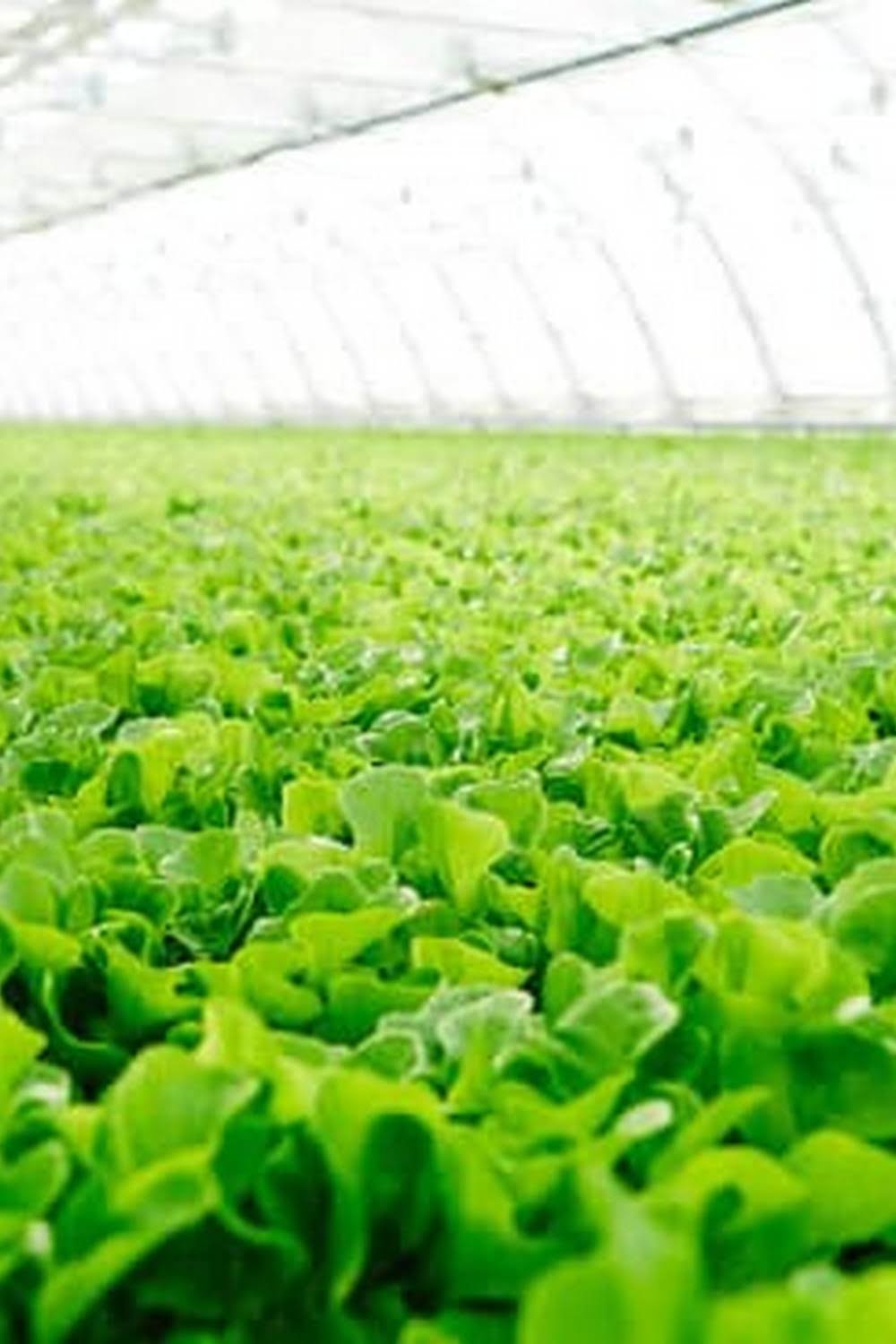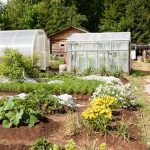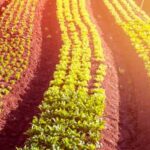Are you looking to create a thriving garden in a limited space? In this article, we will explore the best fruits and vegetables for small gardens, offering tips and advice for successful small garden farming.
With the increasing popularity of urban gardening and limited outdoor spaces, it’s essential to maximize the potential of your garden by choosing the right plants that can thrive in smaller areas. By understanding the importance of growing your own produce and selecting the best fruits and vegetables for small spaces, you can enjoy a bountiful harvest even in a compact garden setting.
When it comes to small garden farming, the benefits are numerous. Not only does it provide an opportunity to connect with nature and enjoy the satisfaction of growing your own food, but it also promotes sustainability and self-sufficiency.
By carefully planning your small garden and selecting the right fruits and vegetables, you can make the most of your limited space while reaping the rewards of fresh, homegrown produce. Whether you have a tiny backyard, balcony, or rooftop space, there are plenty of options for creating a thriving small garden full of delicious fruits and vegetables.
In this article, we will discuss how to plan your small garden effectively, including assessing available space, selecting optimal locations for sunlight and growth, as well as choosing the best plants for your specific environment. We’ll also explore container gardening for small spaces, vertical gardening techniques, companion planting strategies for optimum growth and pest control.
Additionally, we’ll provide maintenance tips for caring for your small garden crops to ensure a flourishing harvest throughout the growing season. Whether you’re an experienced gardener or just starting out with a green thumb, this comprehensive guide will help you make the most of your small garden space with an array of recommended fruits and vegetables.
Planning Your Small Garden
When starting a small garden, it is essential to carefully plan and utilize the available space for maximum productivity. Assessing the area and understanding the sunlight patterns are crucial in determining which fruits and vegetables will thrive in your small garden. Additionally, choosing the right crops that are well-suited for small spaces will ensure a successful harvest.
Before delving into your small gardening venture, it’s important to take into consideration the best fruits and vegetables for small gardens. Some of the top choices include:
- Strawberries: These delicious berries are ideal for small gardens due to their compact growth habit and ability to thrive in containers or hanging baskets.
- Blueberries: Perfect for small gardens, blueberry bushes can be grown in pots or directly in the ground, providing a bountiful harvest with minimal space requirements.
- Dwarf apple trees: With their smaller size and fruit-bearing capabilities, dwarf apple trees are excellent options for limited garden spaces.
- Dwarf peach trees: Compact varieties of peach trees are suitable for small gardens, offering sweet and juicy fruits without taking up too much room.
Selecting these best fruits and vegetables for small gardens will ensure that you make the most out of your limited space without compromising on the quality of your produce. By planning strategically and choosing wisely, you can create a thriving garden filled with an abundance of fresh fruits and vegetables.
Best Fruits for Small Gardens
When it comes to small garden farming, selecting the right fruits and vegetables is crucial for a successful and bountiful harvest. In a limited space, it is important to choose fruits and vegetables that are not only suitable for small gardens but also provide a high yield. Here are some of the best fruits recommended for small gardens:
- Strawberries: These delicious and nutritious berries are perfect for small gardens as they can be grown in hanging baskets or containers, making them ideal for spaces with limited ground area.
- Blueberries: Blueberry bushes are compact and can thrive in small spaces, providing an abundance of sweet and juicy fruits during the growing season.
- Dwarf apple trees: Perfect for those with limited space, dwarf apple trees allow you to enjoy the taste of fresh, homegrown apples without taking up too much room in your garden.
- Dwarf peach trees: Dwarf peach trees are another great option for small gardens, producing an abundance of delicious peaches in a compact size.
By choosing these fruits, gardeners can make the most out of their limited space while still enjoying an assortment of flavorful and nutritious produce.
When planning a small garden, it is important to take into account the specific needs of each fruit and vegetable. With careful consideration and proper maintenance, even those with minimal outdoor space can enjoy a thriving garden full of fresh and delicious produce. Remember that with the right selection of fruits and vegetables, anyone can turn their small plot into a fruitful oasis.
Best Vegetables for Small Gardens
When it comes to gardening in a limited space, choosing the right fruits and vegetables is essential for a successful and bountiful harvest. Whether you have a small backyard, balcony, or patio, there are several options that thrive in confined areas.
The best fruits and vegetables for small gardens are those that can be easily grown in containers or small plots while still providing a high yield. Additionally, selecting varieties that are compact and suitable for vertical gardening can help maximize your available space.
Some of the best fruits for small gardens include strawberries, blueberries, dwarf apple trees, and dwarf peach trees. These fruits are not only delicious but also well-suited for growing in pots or small garden beds. They require minimal maintenance and can be grown successfully even in confined spaces.
As for vegetables, cherry tomatoes, green beans, bell peppers, and spinach are among the top choices for small gardens. These vegetables are perfect for container gardening and can thrive with proper care and attention. They are also versatile ingredients in the kitchen and provide an abundant harvest throughout the growing season.
| Fruits | Vegetables |
|---|---|
| Strawberries | Cherry tomatoes |
| Blueberries | Green beans |
| Dwarf apple trees | Bell peppers |
| Dwarf peach trees | Spinach |
With careful planning and the right selection of fruits and vegetables, it is entirely possible to enjoy a thriving garden in a limited space. By incorporating these recommended options into your small garden farming efforts, you can savor the joys of homegrown produce regardless of space constraints.
Container Gardening for Small Spaces
Tips for Successful Container Gardening
When it comes to small gardens, container gardening is a convenient and efficient way to grow fruits and vegetables in a limited space. To ensure successful container gardening, it is important to choose the right containers and soil for your plants. Select containers that have proper drainage and are the appropriate size for the plants you want to grow. Additionally, using high-quality potting mix will provide the essential nutrients for your crops to thrive.
Choosing the Right Fruits and Vegetables for Containers
Not all fruits and vegetables are suitable for container gardening, so it’s important to select varieties that are well-suited for this type of growing environment. For small gardens, consider planting compact varieties of fruits such as strawberries and blueberries, as well as dwarf apple or peach trees. When it comes to vegetables, cherry tomatoes, green beans, bell peppers, and spinach are excellent choices for container gardening due to their adaptability in smaller spaces.
Maintenance and Watering Techniques
Proper maintenance and watering are crucial for the success of container gardening in small spaces. Regularly inspect your containers for any signs of pests or diseases, and promptly address any issues that arise. Additionally, be mindful of the watering needs of your plants – typically, containers require more frequent watering than traditional garden beds. It’s important to water consistently but not excessively, ensuring that the soil stays moist but not waterlogged.
By implementing these tips and selecting the best fruits and vegetables for small gardens, you can successfully grow a variety of produce in containers even with limited space. Container gardening offers a practical solution for individuals who want to enjoy homegrown fruits and vegetables without access to a large outdoor garden area.
Vertical Gardening
Utilizing vertical space is a great way to maximize the potential of a small garden. By growing vines and climbers such as cucumbers, pole beans, and peas on trellises or fences, gardeners can make the most of limited space. Additionally, vertical gardening can add an aesthetic appeal to small gardens by creating a lush green wall of foliage.
When determining which fruits and vegetables are best suited for vertical gardening, consider plants that naturally grow upwards. Some of the ideal choices for vertical gardening include tomatoes, cucumbers, beans, peas, and certain varieties of squash. These plants not only thrive when given the opportunity to climb upwards but also produce a bountiful harvest in small spaces.
For those interested in maximizing their small garden’s vertical space, there are numerous creative ways to do so. Hanging baskets and wall-mounted planters can be used to grow strawberries, herbs, lettuces, and even dwarf citrus trees. Building multi-level shelving units or using repurposed materials such as pallets can create tiers for planting an array of fruits and vegetables.
| Fruits | Vegetables |
|---|---|
| Tomatoes | Pole Beans |
| Cucumbers | Peas |
| Strawberries | Lettuces |
Companion Planting in Small Gardens
Companion planting is a beneficial practice for small gardens, as it maximizes space and encourages the health and growth of fruits and vegetables. By strategically pairing certain plants together, gardeners can create a more productive and sustainable garden. One of the best ways to ensure success in companion planting is by selecting the best fruits and vegetables for small gardens.
When planning your small garden, consider pairing strawberries with spinach, as they both thrive in similar conditions. The strawberries act as ground cover, protecting the soil and keeping moisture levels consistent, while the spinach grows vertically, making efficient use of space. Another successful combination is bell peppers with cherry tomatoes. These two plants complement each other well, as the tomatoes provide shade for the peppers while also deterring pests that often affect pepper plants.
Additionally, incorporating green beans with dwarf apple or peach trees can also be advantageous in small gardens. The beans fix nitrogen in the soil that benefits the fruit trees while utilizing minimal space on the ground. Selecting these ideal combinations not only aids in space optimization but also promotes healthier growth and natural pest control. Ultimately, understanding which fruits and vegetables work well together will contribute to a thriving and bountiful small garden farm.
Furthermore, implementing companion planting techniques ensures a more diverse mix of crops that can support each other’s needs, leading to reduced reliance on pesticides and chemical fertilizers. This sustainable approach not only benefits the environment but also results in higher-quality produce. By utilizing companion planting strategies with the best fruits and vegetables for small gardens, gardeners can cultivate a flourishing and harmonious ecosystem within their limited gardening space.
Maintenance and Care for Small Garden Crops
Maintaining and caring for small garden crops is essential to ensure a bountiful harvest in limited space. By implementing proper pruning, harvesting techniques, pest control, and disease prevention, small gardeners can enjoy a successful and flourishing produce yield. Here are some tips for maintaining the best fruits and vegetables for small gardens:
Pruning and Harvesting Techniques
Pruning is crucial for promoting healthy growth and maximizing production in small garden crops. Regularly trimming dead or diseased branches from fruit trees such as dwarf apple and peach trees can help improve air circulation and prevent the spread of diseases. Additionally, harvesting fruits like strawberries at their peak ripeness ensures the best flavor and quality. It’s important to gently pluck or cut ripe fruits from the plants to avoid damaging them.
Pest Control and Disease Prevention
In a limited space, it’s vital to protect small garden crops from pests and diseases that can quickly spread among plants. Utilizing natural pest control methods such as homemade insecticidal soaps or introducing beneficial insects like ladybugs can help keep pests at bay without harmful chemicals. Additionally, practicing crop rotation and using disease-resistant varieties of vegetables like cherry tomatoes can minimize the risk of plant diseases.
Sustainable Practices for Small Garden Maintenance
Small gardeners can adopt sustainable practices to maintain their crops without depleting resources or harming the environment. Implementing composting for organic fertilization, collecting rainwater for irrigation, and using mulch to retain moisture are eco-friendly approaches to support plant growth in small gardens. By prioritizing sustainability, gardeners can contribute to environmental conservation while cultivating their favorite fruits and vegetables.
By applying these maintenance and care practices for small garden crops, individuals with limited gardening space can experience the joy of harvesting their own fresh produce. Whether growing strawberries in containers or tending to dwarf apple trees on a vertical trellis, taking proper care of small garden crops ensures a rewarding gardening experience with delightful results.
Conclusion
In conclusion, small gardens offer a wonderful opportunity to grow your own fruits and vegetables even in limited space. By carefully selecting the best fruits and vegetables for small gardens, such as strawberries, cherry tomatoes, and dwarf apple trees, gardeners can enjoy an abundant harvest right from their own backyard. The benefits of having fresh produce readily available, as well as the satisfaction of tending to and nurturing your own crops, make small garden farming a rewarding experience.
With proper planning, maintenance, and care, even those with small outdoor spaces or apartments can successfully grow a variety of fruits and vegetables. Container gardening and vertical gardening provide innovative solutions for maximizing space while still reaping the rewards of homegrown produce. Additionally, companion planting can aid in pest control and optimizing growth in small gardens.
As we wrap up our discussion on the best fruits and vegetables for small gardens, we encourage readers to take the plunge and start their own small garden. The joys of harvesting your own fresh produce are countless, not to mention the health benefits of consuming homegrown fruits and vegetables.
With the right planning and dedication, anyone can turn their limited outdoor space into a thriving garden full of delicious crops. So grab your gardening gloves and get ready to enjoy the fruits (and veggies) of your labor.
Frequently Asked Questions
What Fruits Can You Grow in a Small Garden?
In a small garden, you can grow fruits such as strawberries, raspberries, blueberries, and dwarf fruit trees like apples, peaches, or cherries. These fruits are well-suited for small spaces and can thrive with proper care.
What Vegetables Are Best for Small Gardens?
When it comes to vegetables for small gardens, options like tomatoes, peppers, lettuce, spinach, radishes, and herbs are ideal. These vegetables don’t require a lot of space and can even be grown in containers or raised beds.
What’s the Easiest Fruit and Vegetables to Grow?
Some of the easiest fruits to grow include strawberries and blueberries. They are low-maintenance and can thrive in small spaces. As for vegetables, easy-to-grow options include tomatoes, lettuce, radishes, and herbs like basil or mint. With proper sunlight and soil conditions, these can flourish with minimal effort.

If you’re looking to get into vegetable gardening, or are just looking for some tips on how to make your current garden better, then you’ve come to the right place! My name is Ethel and I have been gardening for years. In this blog, I’m going to share with you some of my best tips on how to create a successful vegetable garden.





